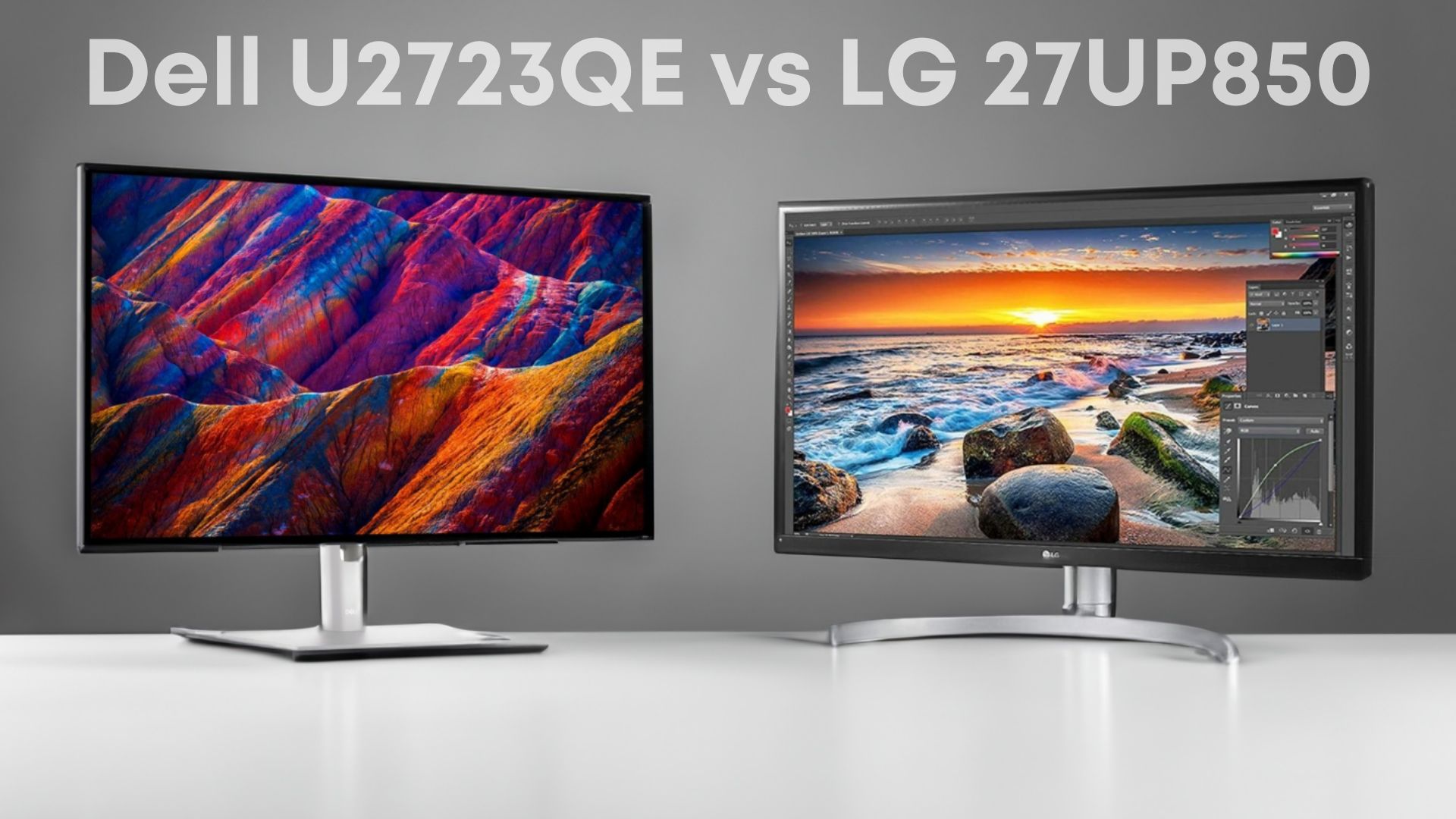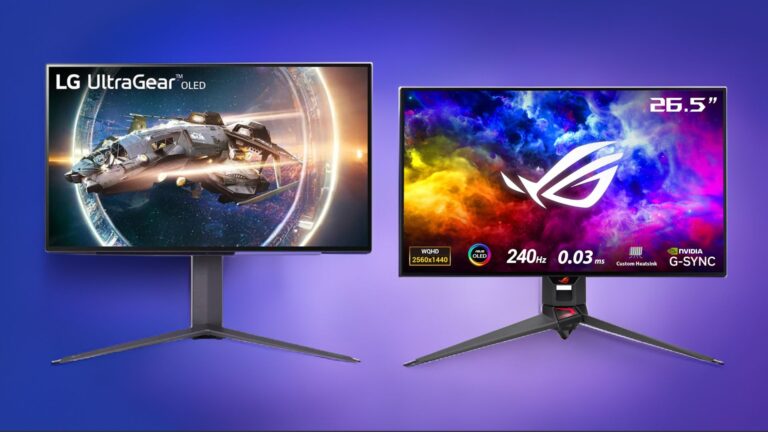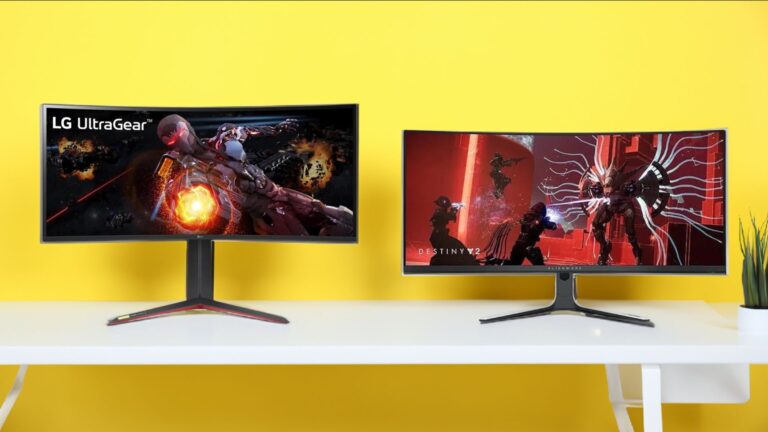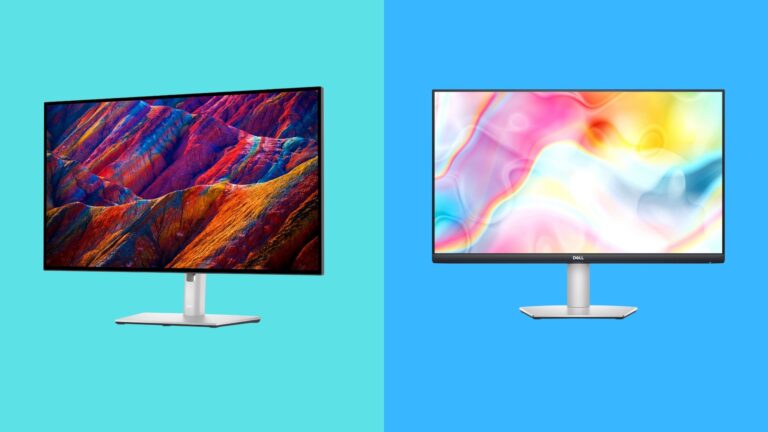In today’s comparison, I’m going to talk about two popular monitors, the LG Ultrafine 27UP850 and the Dell UltraSharp U2723QE. After thorough research on both of these monitors, I’ve detailed all their minor and major pros and cons in this article. So, if you’re considering purchasing one of these monitors, reading this review will help you make an informed decision about which one is better suited for you.
Price & Resolution
Firstly, let’s discuss the price. The 27UP850 can be found in the market priced between $350 to $400, while the U2723QE is priced between $550 to $600. I feel that both LG and Dell have priced these monitors a bit higher compared to their features. Although both monitors perform excellently, which is why many people buy them, if they were priced a bit lower, even more people might consider purchasing them.
Both the 27UP850 and the U2723QE offer 3,840 x 2,160 pixels, meaning they provide a 4K resolution on a 27-inch screen. Additionally, both have an equal pixel density of 163 PPI. So, you can truly enjoy the sharpness and detail of 4K.
Pannel & Refresh Rate
If your work is color-critical, you’d always prefer a monitor with superior color, fantastic vibrancy, and better viewing angles. All these features can be found in monitors with IPS panels, and both the monitors I’m discussing have IPS panels.
LG sells its manufactured panels to many monitor manufacturers, and their panels are highly trusted. That’s why I have no trust issues with the panel on the 27UP850. However, it’s worth noting that the IPS panel used in the Dell U2723QE utilizes LG’s IPS black technology, which even LG hasn’t used in its own monitors yet. Due to this technology, the IPS panel has been upgraded, allowing it to surpass regular IPS in terms of deep blacks and contrast.
Lastly, both monitors offer a standard refresh rate of 60 Hz. While a higher rate would have been better, it’s still acceptable for a professional monitor. You can comfortably do casual gaming on them without any issues. If you prioritize viewing their 4K graphics over performance, they can offer an even better experience. Moreover, the 27UP850 also features FreeSync, supporting a dynamic range of 40Hz to 60Hz.
Brightness, Colors, & Contrast Ratio
Brightness plays a very important role for a monitor. If a monitor has good brightness, you won’t easily see any kind of reflection issues while working. In terms of brightness, both U2723QE and 27UP850 are quite similar, offering a peak brightness of 400 nits. This might not be extremely high, but it’s sufficient even for well-lit rooms.
Both monitors are VESA DisplayHDR400 certified. This means that while watching HDR content, you get decent brightness. Occasionally, the 27UP850’s peak brightness in HDR can even touch 450 nits, and the U2723QE also has similar brightness levels in certain situations.
The U2723QE’s colors are quite impressive, covering a wide color range. It offers 100% sRGB and Rec. 709 color space, 98% DCI-P3, and 90% Adobe RGB color coverage. With such good color spaces, you can perform various productivity tasks like web design, video editing, and photo editing.
However, talking about the 27UP850’s color space, it also offers a decent range of colors, making it competitive. For instance, it provides 99% sRGB and 95% of DCI-P3. These are just numbers, but when I personally used both, I found the performance of U2723QE better. It’s not that 27UP850 is bad, but it felt a bit weaker in terms of color.
The U2723QE’s display is capable of showing 1.07 billion colors, while the 27UP850 can only display 16.77 million colors due to its 8-bit color depth. However, using a frame rate control feature, it too becomes capable of displaying 1.07 billion colors.
Speaking of contrast, the 27UP850 has a contrast ratio of 1200:1, which is good for a regular IPS panel monitor. But it’s not good enough to beat the U2723QE, which offers a contrast ratio of 2000:1, the best so far for an IPS panel monitor.
I believe that only VA or OLED panel monitors can beat this monitor in terms of contrast. There’s only one other IPS panel monitor with such a high contrast ratio, and that’s the 32-inch variant of this monitor.
Features & Menu
All settings of the U2723QE menu are managed by the Dell Display Manager, a software from Dell that includes all display-related menus and features, such as presets, contrast, brightness, PIP/PBP, sharpness, smart HDR, and many more menus and submenus.
On the back of the U2723QE, there’s a joystick to navigate the Display Manager. I found its placement quite good and had no issues using it.
Looking at the 27UP850’s menus, it also offers presets and the regular OSD settings like brightness and contrast. But what I found most special about this monitor is its Hardware Calibration Studio, which can be very useful for users prioritizing color.
To navigate the OSD settings of this monitor, there’s a joystick at the bottom center of the cabinet. It performs well, and I have no complaints about it. However, there’s a tiny LED that keeps blinking when the monitor is off, which can be a bit annoying at times.
Another good thing about it is that it comes with two 5W built-in speakers. They aren’t the best in terms of sound quality but are average. It’s a big deal that they’re included because the U2723QE doesn’t have any built-in speakers. So, you’ll need to connect external speakers or headphones for audio.
Design & Build
Both monitors are aesthetically very impressive. With their colors and looks, they enhance the appearance of your desk. The U2723QE has a silver-colored body with a black border that highlights it. Due to its thin bezels, it has a screen-to-body ratio of 92.8%. The front side is kept plain without any logo, which I found very appealing.
When talking about the 27UP850, the letter “W” written behind its model number indicates its white color. It has thin bezels on the top and sides, but LG has placed its logo on the bottom bezel. Therefore, its screen to body ratio is slightly less than U2723QE, which is 89.82%. Design-wise, both monitors have won my heart with their clean aesthetics.
The stand provided with the U2723QE has been designed with cable management in mind. Its Pentagon-shaped base helps in keeping the monitor stable. It offers excellent ergonomic adjustments, including height, swivel, pivot, and tilt.
In the 27UP850, you also get good height, pivot, and tilt adjustments, but it doesn’t offer swivel adjustment. Its stand resembles a thick aluminum pipe, and it has a C-shaped base, which provides some extra space on your desk. However, I personally preferred the stand and base of the U2723QE.
If you have an old mount, you can also set it up with these monitors as they have 100 millimeter VESA mount holes.
Ports
There’s a significant difference in terms of ports between the two. While the U2723QE offers numerous ports, the 27UP850 has very selective ports that cater to professional needs up to a certain level.
The U2723QE comes with ports for features like daisy chaining, including 1 displayport in, 1 displayport out, 1 HDMI 2.0 port, 1 3.5 mm audio out port, 5 USB 3.2 Gen 2 Type-A ports, 2 USB 3.2 Type-C Upstream ports (one of which can deliver 90 W power with Displayport Alternate mode), and 1 Type-C downstream port that can deliver up to 15 W power. It also has an RJ45 port for connecting to a local area network.
Looking at the ports of the 27UP850, it has 2 HDMI 2.0, 1 DisplayPort 1.4, 1 3.5 mm audio out port, 2 USB 3.0 Type-A downstream, and 1 USB 3.0 Type-C upstream port. Its Type-C port can deliver up to 96 W power with Display Alternate mode, which is 6W more than the U2723QE.
Overall, in terms of ports, I only liked the 96 W power delivery feature of the 27UP850. I would have preferred it more if it had USB 3.2 Gen 2 ports. However, if you’re okay with its older generation ports and are satisfied with the ports it offers, then I can recommend it.
If your work requires connecting multiple devices, then the U2723QE is the best option compared to the 27UP850 as it fulfills all your port needs efficiently.
Which Should You Buy?
In conclusion, if you’re a user who wants to spend a good amount once to buy a monitor with power-packed features and performance, I would recommend the U2723QE. It offers excellent features like built-in KVM, IPS black panel technology, a great USB hub, etc. The only thing I didn’t like about it is its price.
However, if you don’t have the budget for the U2723QE, then you can also consider the 27UP850. It offers some professional-grade features, like delivering 96W power through its Type-C, which is quite significant as such features are usually found in high-end monitors. You can also download the LG hardware calibration studio to further optimize its color performance. It also offers FreeSync, bright HDR, and many other excellent features.
Ultimately, it depends on how you use your monitor and what features are more important to you.








